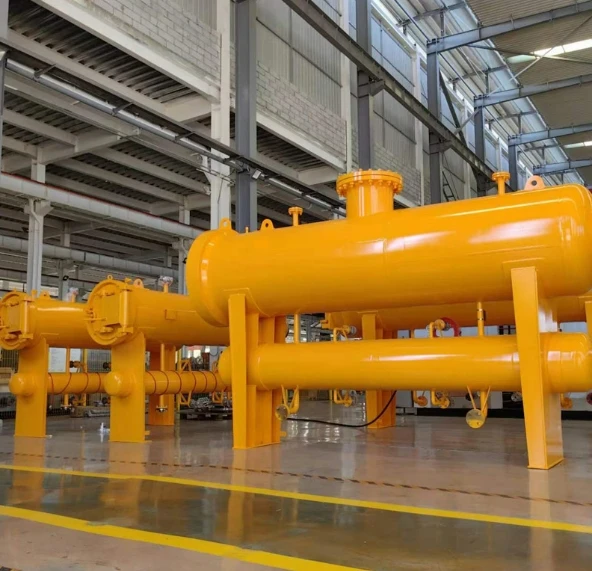
Nov . 08, 2024 08:56
Back to list
Pressure Vessel Design and Safety Considerations for Industrial Applications
Understanding Pressure Vessels Principles and Applications
Pressure vessels are integral components in many industrial processes, serving as containers for fluids and gases under high pressure. Their design and functionality are governed by rigorous engineering principles to ensure safety, efficiency, and reliability. In this article, we will explore the fundamental concepts of pressure vessels, their applications, the materials used, and the importance of safety regulations.
What is a Pressure Vessel?
A pressure vessel is defined as a container designed to hold gases or liquids at a pressure substantially different from the ambient pressure. These vessels are characterized by their ability to withstand high internal pressures, which typically exceed 15 psi. Common examples include boilers, storage tanks, and reactors used in various industries, including oil and gas, chemical processing, and power generation.
Principles of Pressure Vessel Design
The design of pressure vessels is guided by specific engineering principles that focus on safety and structural integrity. Key factors considered during the design process include
1. Material Selection The materials used must be capable of withstanding high pressures and temperatures. Common materials include carbon steel, stainless steel, and special alloys designed for corrosive environments.
2. Wall Thickness The thickness of the vessel walls is calculated to ensure they can withstand the internal pressure without deforming or failing. The American Society of Mechanical Engineers (ASME) provides guidelines and formulas to determine the minimum wall thickness based on pressure, material properties, and vessel dimensions.
.
4. Safety Features Safety mechanisms, such as pressure relief valves, are vital to prevent over-pressurization, which can lead to catastrophic failures. These valves are designed to release excess pressure, ensuring the vessel operates within safe limits.
وعاء الضغط

Applications of Pressure Vessels
Pressure vessels are used in a wide range of applications across various industries
- Oil and Gas In the oil and gas sector, pressure vessels are essential for the storage and transport of liquefied gas, as well as during the refining processes.
- Chemicals The chemical industry relies on pressure vessels for reactions that occur under high pressure, including polymerization and fermentation.
- Power Generation Boilers used in power plants are a type of pressure vessel that generates steam for electricity production by converting water into steam under high pressure.
- Pharmaceuticals In the pharmaceutical industry, pressure vessels are utilized for processes like autoclaving, where materials are sterilized under high pressure.
Regulations and Safety Standards
Due to the potential risks associated with pressure vessels, strict regulations govern their design, construction, and operation. In many countries, organizations such as the ASME and the Occupational Safety and Health Administration (OSHA) set safety standards to protect workers and the environment. These regulations require regular inspections, maintenance, and certifications to ensure that pressure vessels remain safe throughout their operational lifetime.
Conclusion
Pressure vessels are crucial in various industrial applications, and their design requires a deep understanding of engineering principles and safety standards. As industries evolve and new technologies emerge, the importance of innovative designs and materials in pressure vessel construction will continue to grow. By adhering to established safety regulations and implementing advanced engineering practices, the industry can ensure the safe and efficient operation of these vital components.
Latest news
-
Safety Valve Spring-Loaded Design Overpressure ProtectionNewsJul.25,2025
-
Precision Voltage Regulator AC5 Accuracy Grade PerformanceNewsJul.25,2025
-
Natural Gas Pressure Regulating Skid Industrial Pipeline ApplicationsNewsJul.25,2025
-
Natural Gas Filter Stainless Steel Mesh Element DesignNewsJul.25,2025
-
Gas Pressure Regulator Valve Direct-Acting Spring-Loaded DesignNewsJul.25,2025
-
Decompression Equipment Multi-Stage Heat Exchange System DesignNewsJul.25,2025

